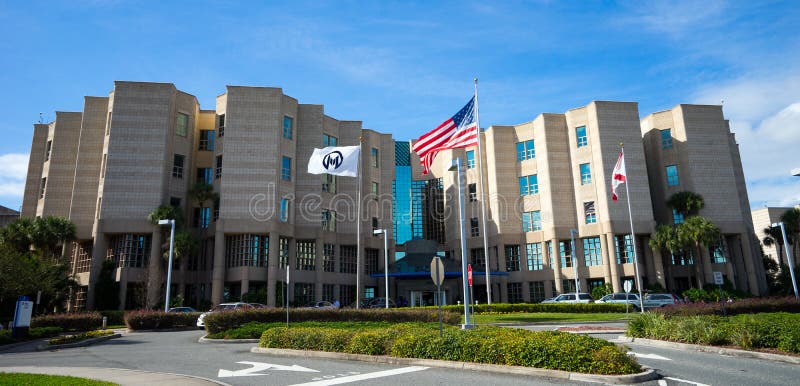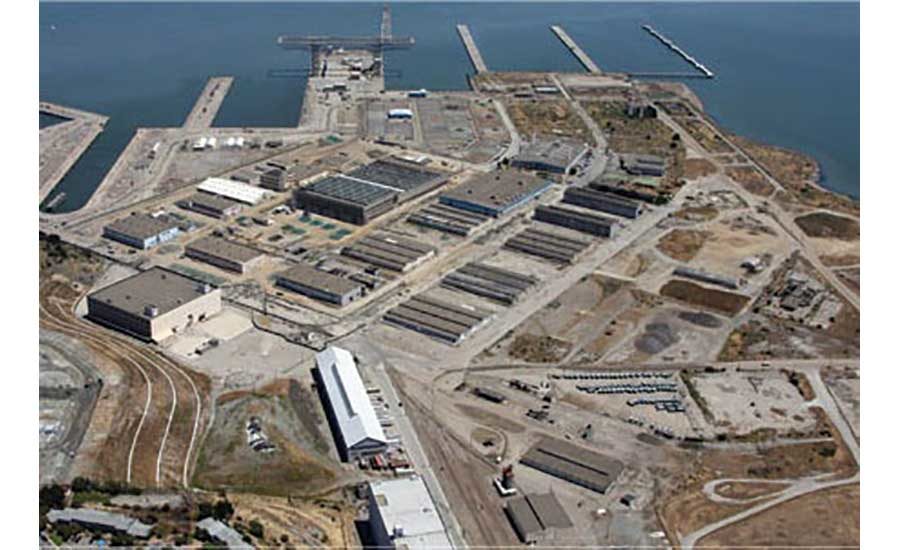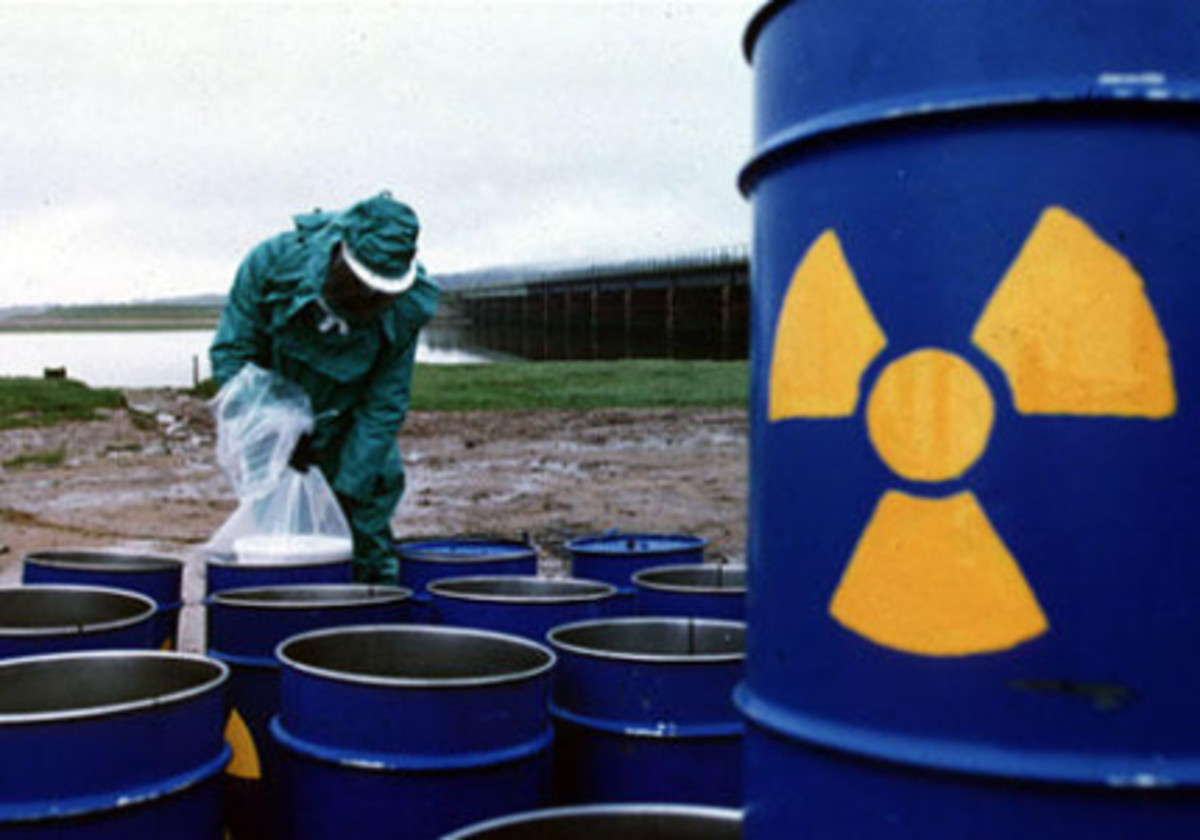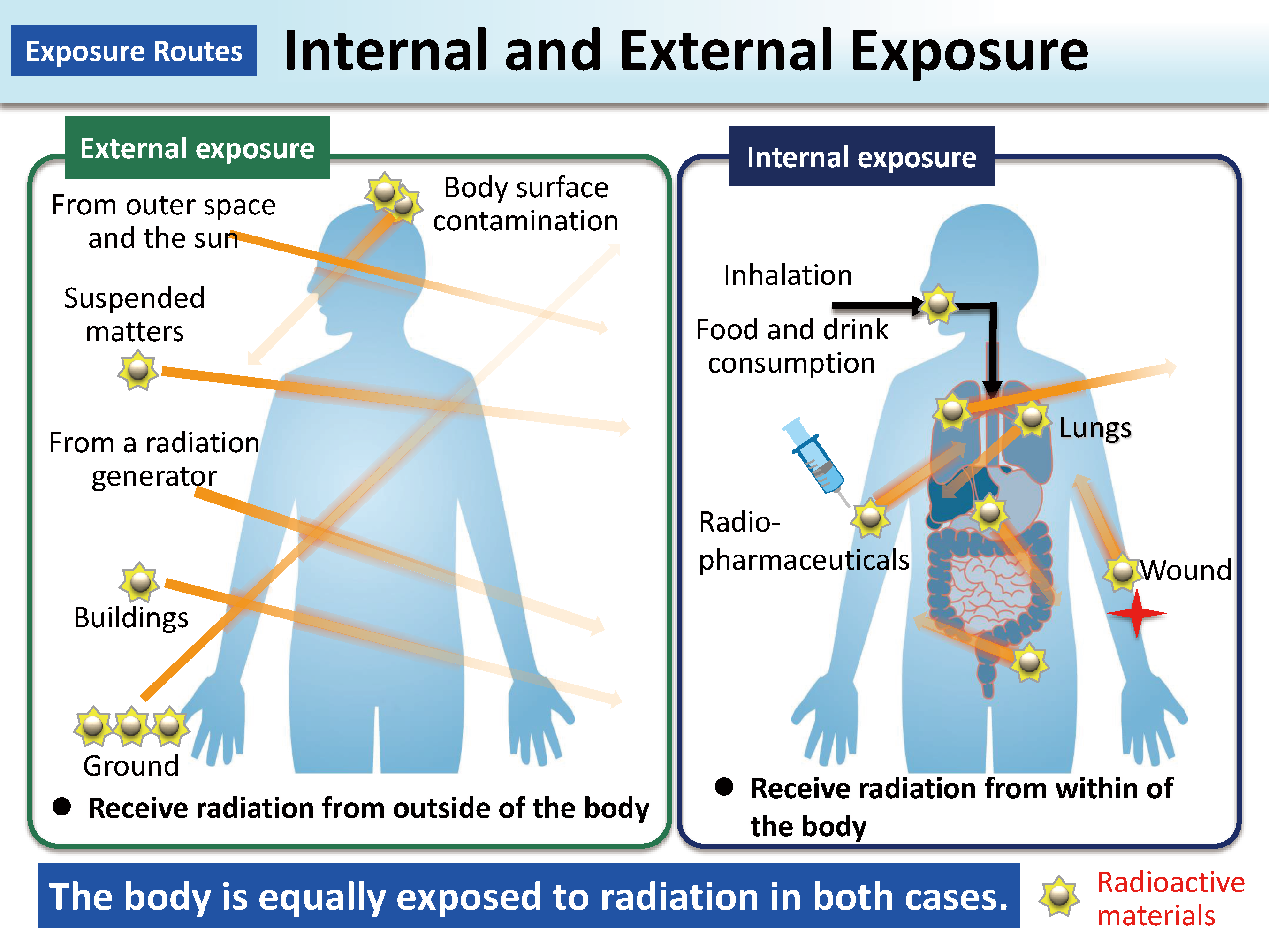
The Pentagon’s Moffitt Cancer Center
The Navy Knows Thousands Were
Exposed to Cancer-Causing Materials,
But Hasn’t Told Them
Melissa Chan / NBC News
(January 27, 2024) — Moments after he landed in Los Angeles for his son’s wedding last year, Gilbert “Kip” Wyand said he vomited a gallon of blood in the airport parking lot.
Severe stomach pain, drenching night sweats and sudden body temperature changes soon followed. Two months later, in May, Wyand was diagnosed with acute lymphoblastic leukemia — a type of cancer of the blood and bone marrow that the National Cancer Institute says can be caused by radiation exposure.
The diagnosis confused him. At 57, he had been healthy his whole life, rarely even having a cold, and he had no family history of health issues. But the next month, as his son tried to make sense of his illness, he stumbled upon a newly published Navy report, outlining efforts to address radioactive materials that have contaminated the now-closed Long Beach Naval Shipyard in California for decades.
It was the first time Wyand, a Navy veteran who lived and worked at the shipyard in the late 1980s, learned he may have been exposed to radium-226 and strontium-90 — radionuclides that build up in the body over time and are linked to leukemia and other cancers.
The Navy has known about multiple environmental contaminations at the base for more than 20 years. In 2008 it conducted a study that found radiation, then publicly documented for the first time in 2023 the detection of radiation involving levels of radium-226 and strontium-90. But the Navy had not alerted Wyand or any others to the potential exposure. A spokesperson said there is no mechanism in place to notify veterans of possible exposures after a base is no longer operational.
That means tens of thousands of veterans who worked at the shipyard may have been exposed to cancer-causing radioactive materials and still do not know.
“It’s disturbing,” Wyand said from his hospital bed in Tampa, Florida, after his third round of chemotherapy last fall. “More should have been done. There should be transparency when something is found out.”
Wyand sought to spread awareness about the exposure so that other veterans of the shipyard would know that they too could be at risk, as he scrambled to secure approval for a bone marrow transplant from the Department of Veterans Affairs.
He said the VA required him to make about a dozen medical appointments, including one for a mental health assessment and another for a dental exam. In November, he told NBC News he was beginning to panic.
“I don’t have time to wait and see what’s going to happen,” he said. “By the time I jump through all these hoops, it’s going to be too late for me.”
On Jan. 10, Wyand died, leaving his family dazed and outraged.
“We’re all angry,” his son, Adam Wyand, said. “We all feel like we’ve been robbed.”

Radioactive soil remains at Navy’s Shipyard sites.
Decades of Contamination
The initial contamination at the former Long Beach shipyard, where vessels used to dock for repair and maintenance, occurred from the 1940s to the 1960s, when workers were disposing of toxic waste, according to the report the Naval Facilities Engineering Systems Command (NAVFAC) released last June.
Then, from the 1960s until 1980, about 3,000 gallons of chemical waste had leaked out of damaged storage drums into the ground, the 99-page report said.
It poisoned the groundwater with high levels of dichloroethene, trichloroethylene, vinyl chloride and benzene, a Navy report released in 2000 said. The colorless chemicals can cause several diseases, including cardiac defects and some cancers, according to the Agency for Toxic Substances and Disease Registry, a federal public health agency under the U.S. Department of Health and Human Services. Concentrations ranged from 32 to 583 times higher than what was considered acceptable.
On top of that, nuclear weapons testing, which began globally in 1945, released radioactive materials into the atmosphere that eventually settled on the ground, according to the California Department of Public Health.
Navy officials first detected radium and strontium as they were cleaning up the affected groundwater and soil in the early 2000s, the NAVFAC report said. In 2008, they confirmed that levels of the substances were above the remediation goals set for public safety.
“It was a death concoction,” Wyand’s son, Adam, said. “When you talk about genetic mutation, that’s a lot of variables.”
From 1985 to 1987, Wyand said, he lived and worked on the USS George Philip, which was docked with many other ships on a pier extending into Long Beach Harbor. It was the worst contaminated area at the Long Beach shipyard, according to the Navy report.
In his early 20s, Wyand did not have the money to live off base or have relatives nearby he could stay with. So, he said, “I was there all the time. I was really digging in deep with that stuff.”
The state health department, which reviewed the latest Navy report and gave feedback before it was published, said it is possible that veterans who lived and worked at the shipyard could have been exposed to radiation from radium and strontium.
It’s unclear how many may have been affected — or how many served during the start of the contamination in the 1940s until the shipyard closed in 1997 — because the Navy’s Base Realignment and Closure office that handles environmental cleanups at closed facilities does not have access to personnel records, Navy spokesperson Lt. Cmdr. Joe Keiley said.
NAVFAC’s website says at least 40,000 people were stationed at Long Beach from 1965 to 1970 — a peak period of personnel and ship activity during the Vietnam War.
It’s also unclear how many other veterans besides Wyand may have submitted claims to the VA related to toxic exposure from the Long Beach shipyard. The agency said it does not have site-specific exposure data.
“We encourage any veteran who believes they were exposed to toxins during their military service to coordinate with their local Veterans Affairs office,” Keiley said.
Exposure to high levels of strontium may cause leukemia and cancers of the bone, nose, lung and skin, according to the Agency for Toxic Substances and Disease Registry, while high levels of radium may lead to increased risks of bone, liver and breast cancer.
Experts say it is unclear how long a person would have to be exposed before cancer forms. Neha Mehta, a researcher with the University of Brussels and the lead author of a 2019 study on the two contaminants, said it depends on the dose amount, duration and proximity.
The effects, she said, are not immediate. Strontium stays in the bones, and radium, the most long-lived isotope, builds up in the lungs and bones over time.
“It has a long half-life in the body, during which time the radiation continues,” said Dr. James Dahlgren, who has been treating and studying people with toxic chemical exposures for more than 50 years.
When it comes to acute lymphoblastic leukemia, there is no way to prevent it. But Dahlgren said it could have helped if Wyand had gotten the earliest possible care. “If he knew he was at risk for cancer, the doctors taking care of him could recognize the early signs,” he said.
Wyand’s son said there was no way to know. The symptoms appeared suddenly and severely.
“It waits 30 years and then it hits you like a sack of potatoes,” Adam said. “Every second counts.”

No Time to Wait
From the Los Angeles airport last March, Adam rushed his father, whose shoes were soaked in blood, to a nearby Veterans Affairs hospital.
Wyand underwent surgery to staple ulcers in his stomach. His son said the doctors there believed the ulcers were caused by Wyand not eating enough food while taking over-the-counter pain relievers for back pain. “They told him to stop taking ibuprofen,” Adam said.
Less than three days later, Wyand was standing by his son’s side at the wedding. “It took everything he had to make it,” Adam said.
Wyand felt fine, relieved to see his son surrounded by so many people who loved him, according to Louise Wyand, who at the time was his girlfriend of 12 years. That night, he asked Louise about renting a car and driving to Las Vegas to get married themselves “if that sounded good.”
They changed their return flight and tied the knot at the Little White Wedding Chapel in Sin City the next day.
Back home in Hudson, Florida, more symptoms emerged: night sweats, abdominal pain, chills. The newlywed said it felt like being “run over by a truck.” By May, his battle to get lifesaving care began.
Wyand underwent his first chemotherapy treatment over the summer, but he needed to get a bone marrow transplant to survive. That approval process, the VA said, typically requires comprehensive clinical and psychosocial evaluations, dental assessments and alcohol, tobacco and toxicology screens.
“Time was of the essence,” Adam said, adding that he felt handcuffed by the VA’s multistep mandates and the waiting times for appointments. Adam said his father could not book the necessary dental exam with a VA provider for three weeks.
A recent search by NBC News on a VA website that alerts patients to average wait times found that the nearest dental clinic near Wyand was not accepting new appointments. The second closest clinic had an average wait time of 25 days.
“His life and death is in their hands,” Adam said. “Instead of helping him, they made him go to 12 other appointments.”
Wyand’s health quickly deteriorated, and his frail body grew increasingly resistant to chemotherapy treatments.

A ‘Systemic Lack of Candor’
Wyand believed the shipyard exposure caused his cancer.
While the connection may be possible, experts said it is difficult to know for sure. Dahlgren said he “would not hesitate” to say the shipyard is at least a “significant contributor to the cause.” “It’s not a crazy idea at all,” he said.
When asked whether the Navy notified veterans who may have been exposed, NAVFAC base environmental coordinator Dave Darrow responded by saying the radioactive objects were buried in the ground, which he said was the accepted disposal practice at the time.
The Navy, along with the VA and California’s health and toxicity agencies, say the levels of contamination at the former shipyard are currently low and pose no public health hazards. The site now houses one of the world’s largest container terminals.
This is not the first time the Navy has had to contend with toxic materials and contamination at its facilities.
Some 400 miles north of Long Beach, critics say there are many reasons to be skeptical.
The Navy has made similar safety claims about the former Hunters Point Naval Shipyard in San Francisco. But officials said two new radioactive objects were recently found at the site, which is reportedly earmarked for the city’s biggest development project.
The findings have worsened public trust there, years after two government contractors were sentenced in federal court for falsifying records by saying soil levels were safe in areas that were not in fact tested.
The fraud was made public in 2018 only after the nonprofit Public Employees for Environmental Responsibility filed a Freedom of Information Act request. The group obtained EPA documents that flagged a “widespread pattern of practices that appear to show deliberate falsification.”
“It set off a firestorm,” Jeff Ruch, an attorney with the nonprofit, said.
Ruch said it is the latest example of the Navy’s “systemic lack of candor.”
In one of the largest water contamination cases in U.S. history, up to 1 million people who lived or worked at Camp Lejeune in North Carolina from 1953 to 1987 may have been exposed to a drinking water supply contaminated with chemicals, federal health officials said.
Military leaders at Camp Lejeune were alerted to the water problem as early as 1980. But in 2010, higher-ups were still downplaying the issue.
Many people who were exposed went many years before they learned about the contamination. Tens of thousands of victims are still seeking justice through legal pathways today.
Separately, in 2021, a fuel leak poisoned thousands of people at the Red Hill Bulk Fuel Storage Facility in Hawaii. Investigators said the contamination was the result of the Navy’s “ineffective immediate responses” and failure to act with urgency.

‘Fighting for His Life’
On Dec. 4, 2023, Wyand was paralyzed from his waist down, and his eye became infected, side effects of either the chemotherapy or the cancer itself, Adam said.
The prognosis was grim, but the family got some good news. The VA had not yet relayed a decision on the bone marrow transplant, but it had approved Wyand for a form of immunotherapy called CAR T-cell therapy, the family said.
“My Dad is getting his CarT treatment today,” Adam said in a text message on Jan. 2. “It’s going to be tough on him because the chemo didn’t work prior to today. But staying positive!”
Wyand initially responded well to the treatment, flooding his family with more hope than they had in months. But on Jan. 10, his body crashed. “My Dad is in the ICU fighting for his life,” Adam texted.
As doctors rushed into the room, Wyand called out for his wife. “He pulled me over to his chest and was holding me there, and he said, ‘I need my dad,’” Louise said. “That was the last time I talked to him.”
Wyand’s parents, his two daughters and his aunts raced to the hospital. But his heart and his lungs had stopped. His major organs failed.
Once the family had assembled at Wyand’s bedside, they took him off life support.
Adam told his father that he knew he had fought as hard as he could. Wyand’s father, Keith Wyand, 79, told his son he tried his best to get to him in time.
On April 11, on what would have been Wyand’s birthday, his family plans to spread his ashes at John’s Pass on Madeira Beach in Florida, his favorite place to go fishing.
“If he could have just gotten treatment before his health started massively deteriorating,” Adam said, “he would have had a chance.”
Posted in accordance with Title 17, Section 107, US Code, for noncommercial, educational purposes